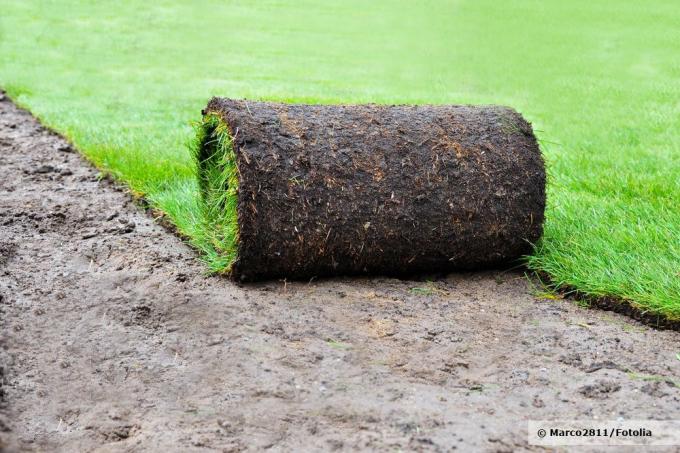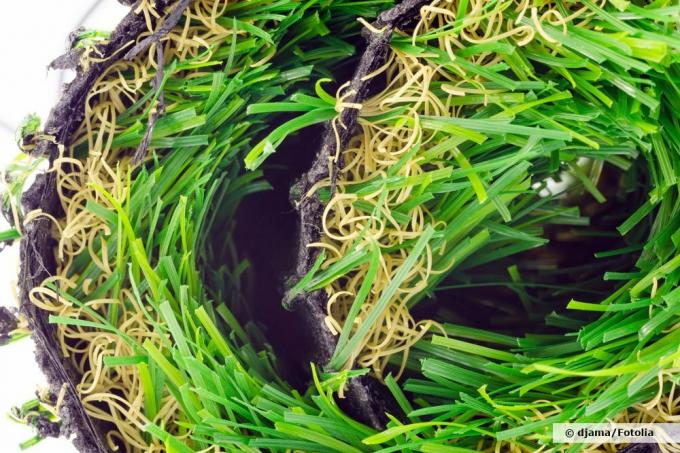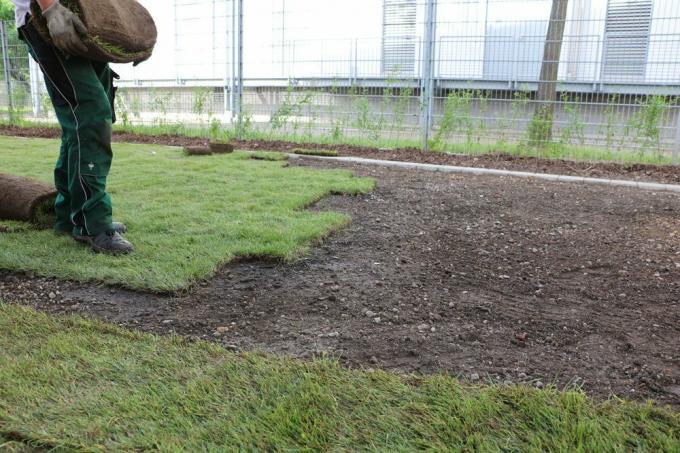
table of contents
- causes
- Lack of water
- Waterlogging
- Nutritional deficiency
- Acidification of the soil
- Too often or short lawn cut
- Peculiarity of turf
Almost every house with a garden needs at least a small piece race. It can be used in many ways for playing and relaxing and enriches the look with a calm, pleasant area that can be specifically arranged with other plants. In order to have the hoped-for green in your own garden as quickly as possible, turf offers the option of laying finished lawns from a roll in the garden. If this turns yellow or brown after installation, good advice is often expensive. We'll tell you how you can find a quick remedy in most cases.
causes
It happens again and again that turf turns brown or yellow over time in parts or over the whole area. However, these discolorations are usually a sign of a problem that, if there is no “treatment”, overcomes short or long lead to permanent damage to the sod, or even to the death of the entire turf can. It is therefore worthwhile to quickly identify the causes and determine suitable measures to eliminate them:

Note: For a better overview, the following list is sorted according to the causes. When sorting according to symptoms, a distinction would only be made between the colors brown and yellow, but each with an enormous number of possible origins.
Lack of water
Symptoms
- leaves turning brown from the tip of the leaf
- accompanied by rapid drying out of the brown leaf parts
- Previously lower water content due to lying stalks
Possible Cause
- too little or too little watering
- Insufficient contact between the turf and the ground
- as a result, no access to water supplies in the ground
- too high soil compaction
- Laying out the lawn with folds or hollows
remedy
- if the water supply is too low, increase the amount of irrigation water
- in the case of insufficient ground contact, elimination of cavities by removing the sod and filling it
- Creation of full-surface contact by rolling on again
- If the soil is too compact, mulch the lawn, including the subsoil, to create the permeability required for root growth
Attention: If the soil under the turf is too compact, the roots will not get to the water in this soil layer. Since removing the turf and then loosening up the soil does not seem practicable, the area should be carefully scarified. At least some improvement is thereby achieved. However, the process should not be too intensive in order to keep the damage to the sod to a minimum.
Note: If there is simply no water supply, either the pure amount can be increased or the water supply can be optimized. Small doses every day are less effective, as large amounts evaporate before they even reach deeper layers. Rarer doses in larger quantities penetrate deeper and remain usable for the grass longer.
Waterlogging
Symptoms
- Even yellow-brown discoloration of the stalks
Possibleroot cause
- too intensive watering
- resulting in waterlogging in the sub-floor area
- in the long run rot of the roots and death of the plants
- Discoloration of the leaves due to insufficient supply from the damaged roots
remedy
- Reduce the watering amount
- Make sure that the soil is well-drained when laying
- add sand if necessary
tip: Whether there is too much or too little water in the ground can be determined very easily at the beginning by lifting a sod. If the soil and the lawn are damp, everything is fine. In the event of dryness or muddy wetness, however, there is a need for action! Water every 2-3 days for new installations in spring and autumn, initially daily in midsummer! Watering around 10 to 12 liters per square meter is usually appropriate.
Nutritional deficiency
Symptoms
- flaccid, lying leaves with increasing brown color
Possible Cause
- too little nutrient content in the soil
- no access to nutrients due to the lack of contact with the soil
remedy
- Nutrient supply through the application of fertilizers
- if there is insufficient ground contact, proceed as described in the bullet point "lack of water"
Acidification of the soil
Symptoms
- Flat yellow matting of the lawn, usually after the first winter
Possible Cause
- too acidic soil
- ideal pH value 6-7, from approx. 5.5 critical
- rapid spread of yellow mosses that prefer acidic soils
remedy
three-phase remedy usually makes sense:
- Scarifying for better ventilation
- Determine the pH value using test strips to reliably determine the cause
- If the acid is actually too acidic, add lime to neutralize the acid
Too often or short lawn cut
Symptoms
- Brown discoloration from the leaf tips
Possible Cause
- Lawn cut too often in the growth phase
- too low cutting height selected
- In both cases, the strain on the stalk is too high, resulting in death
remedy
- Increase the mowing interval
- Do not choose a cutting height of less than 4 to 5 centimeters in the growth phase
- thus sufficient development reserves for the stalks for the energy-sapping root formation
tip: Even if the cause seems to be recognized very quickly in many cases, it is worth taking a comprehensive look at several factors. Often different, sometimes differently pronounced "problems" come together, which together then lead to discoloration of the lawn. If a cause is eliminated, the symptoms can disappear, but optimal growth is only achieved when all parameters are in the (in the truest sense of the word) green area. Those who know and take into account the special features of turf from the outset, on the other hand, avoid numerous difficulties without ever being in touch with the resulting symptoms come.
Peculiarity of turf
Ultimately, however, the roll of lawn is no more or less than normal grass. For a faster installation and a more successful growth phase, these are only already previously cultivated under monitored conditions and as a closed and contiguous area harvested.
Logically, as a result, different things have to be considered when paving than with the known sowing. While germination and budding are irrelevant because they have already taken place, the focus is on the good connection of the laid sod to the subsoil. A crease-free, flat installation on a loose and evenly leveled subsurface enables the lawn to grow easily into the existing subsoil. In this way, the lawn can easily access the reservoirs in the ground and thereby secure its own water and nutrient supply in a short time. Therefore, if you attach particular importance to this aspect of ground contact when installing turf, the course is set for growth without brown or yellow discoloration as far as possible.




